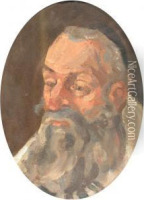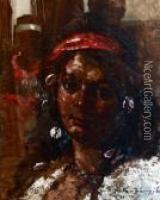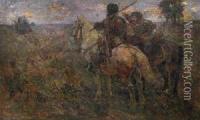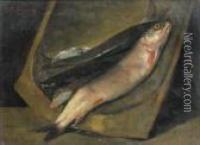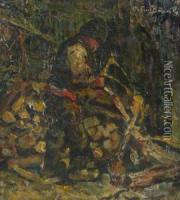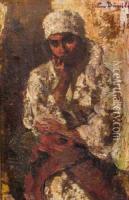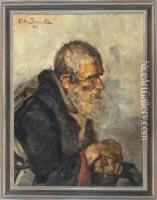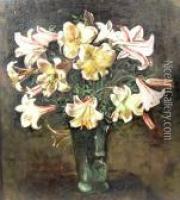Octav Bancila Paintings
Octav Băncilă was a Romanian painter, primarily known for his socially charged and politically engaged works that often depicted the hardships and injustices faced by the working class and the poor in early 20th-century Romania. Born on April 4, 1872, in Botoșani, a small town in northeastern Romania, Băncilă showed an early interest in art and eventually moved to Iași to pursue his passion.
He studied at the National School of Fine Arts in Iași and later moved to Munich, Germany, to continue his art education. Băncilă was deeply influenced by the social realist movement and the works of artists like Jules Bastien-Lepage and Jean-François Millet, who depicted the lives of peasants and laborers.
Returning to Romania, Băncilă became a central figure in the country's art scene, using his brush to comment on social issues. His most famous painting, 'The Strike' ('Grevă'), showcases his commitment to social realism and captures the tensions and emotions of a workers' strike. Throughout his career, Băncilă's art remained committed to social themes, reflecting his political leanings and his empathy for the underprivileged.
Băncilă's art was not limited to painting; he was also involved in illustration and contributed to various Romanian publications, where his drawings often had a satirical edge, critiquing the political and social environment of his time.
Despite the political nature of his work, Băncilă was recognized and appreciated in Romania, becoming a professor at the National School of Fine Arts in Iași and influencing a new generation of Romanian artists. His legacy is preserved in the collections of major Romanian museums and in the Octav Băncilă Art High School in Iași, which is named in his honor.
Octav Băncilă passed away on February 3, 1944, in Iași, leaving behind a powerful body of work that continues to resonate with audiences for its poignant social commentary and its portrayal of the human condition.
